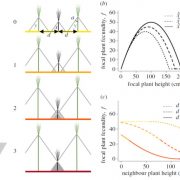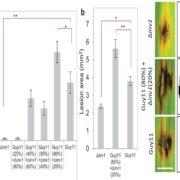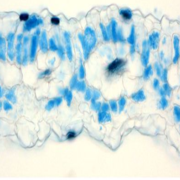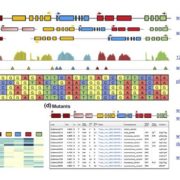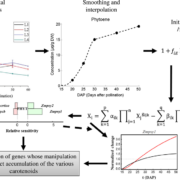Global plant–symbiont organization and emergence of biogeochemical cycles resolved by evolution-based trait modelling (Nature Ecol Evol)
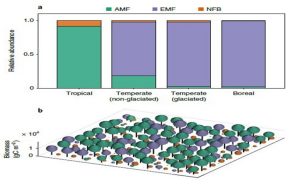 Most plants depend on microbial partners (symbionts) to help them take up nutrients from the soil. Lu and Hedin set out to identify how these plant-symbiont partnerships contribute to plant distributions and biogeochemical cycles, using an evolution-based modelling approach. The model takes into account forest carbon and nutrient cycles, nutrient limitations and the exchange of photosynthetically acquired carbon for nutrients gained from belowground symbionts. The manner in which this method differs is that enables the most successful individual plant strategies to emerge within the plant-nutrient cycle, regardless of whether the exposed properties are optimal for the ecosystem. Based on results, a modelled world without symbioses would have a 48 and 19 % drop in tropical and boreal forests when it comes to nitrogen and phosphorus cycling. That leads to the conclusion that the evolution of belowground symbioses influenced the cycles discussed in the paper. (Summary by Tina Ugulin) Nature Ecol. Evol. 10.1038/s41559-018-0759-0
Most plants depend on microbial partners (symbionts) to help them take up nutrients from the soil. Lu and Hedin set out to identify how these plant-symbiont partnerships contribute to plant distributions and biogeochemical cycles, using an evolution-based modelling approach. The model takes into account forest carbon and nutrient cycles, nutrient limitations and the exchange of photosynthetically acquired carbon for nutrients gained from belowground symbionts. The manner in which this method differs is that enables the most successful individual plant strategies to emerge within the plant-nutrient cycle, regardless of whether the exposed properties are optimal for the ecosystem. Based on results, a modelled world without symbioses would have a 48 and 19 % drop in tropical and boreal forests when it comes to nitrogen and phosphorus cycling. That leads to the conclusion that the evolution of belowground symbioses influenced the cycles discussed in the paper. (Summary by Tina Ugulin) Nature Ecol. Evol. 10.1038/s41559-018-0759-0


